
Understanding the Role of Electric Main Breakers in Home Safety and Energy Efficiency
The Electric Main Breaker plays a crucial role in safeguarding homes and enhancing energy efficiency, making it an essential component in modern electrical systems. According to the National Fire Protection Association (NFPA), electrical failures contribute to approximately 46,700 home fires annually, resulting in substantial property damage and loss of life. Moreover, the U.S. Department of Energy reports that properly functioning electrical systems, including Electric Main Breakers, can help reduce energy waste, with energy efficiency improvements potentially saving homeowners up to 25% on their utility bills. Understanding how Electric Main Breakers protect against overloads and short circuits while optimizing energy consumption prepares homeowners to make informed decisions about their electrical systems. This guide aims to provide insights into the operation, benefits, and maintenance of Electric Main Breakers, empowering homeowners to enhance their home's safety and efficiency effectively.
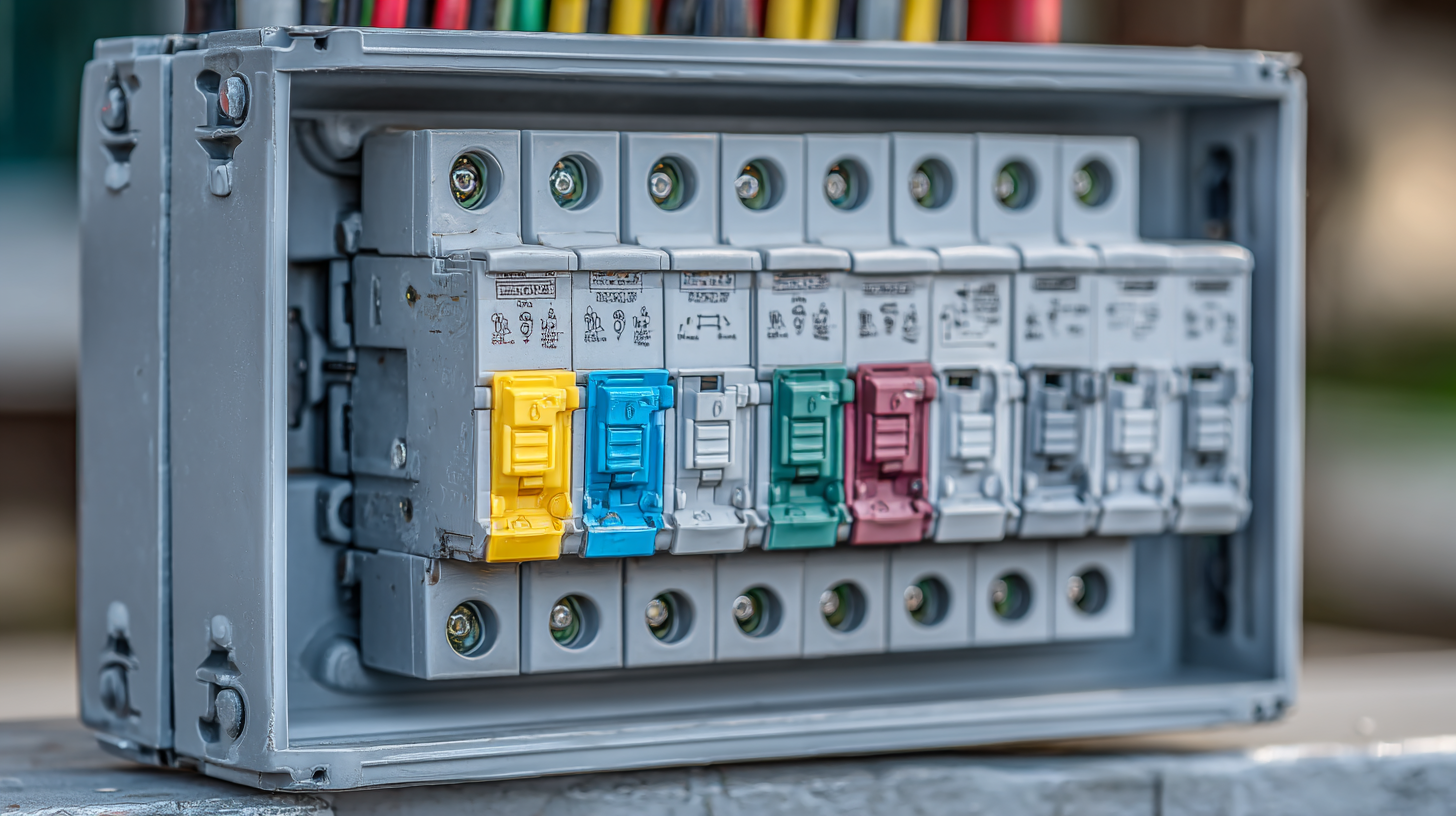
How Electric Main Breakers Protect Your Home from Electrical Hazards
Electric main breakers play an essential role in safeguarding your home from electrical hazards. Acting as the first line of defense, these devices monitor electrical flow and prevent overloads or short circuits, which can lead to fires or electrical shocks. When a fault occurs, the breaker automatically interrupts the current, ensuring that your family and home remain safe from potential dangers. Moreover, with the growing reliance on complex electrical systems, effective breakers enhance overall energy efficiency, which can lead to lower utility bills.
To enhance your home’s electrical safety, consider the following tips:
1. Regularly inspect your electrical panel and breakers for signs of wear or damage, as outdated or malfunctioning units can compromise safety.
2. Invest in residual current devices (RCDs) as an additional layer of protection against electrical shocks, particularly in high-risk areas such as bathrooms and kitchens.
3. Schedule routine maintenance with a qualified electrician to ensure that your system is up-to-date and compliant with current safety standards.
By understanding these critical components of your electrical system, you can significantly increase the safety and efficiency of your home.
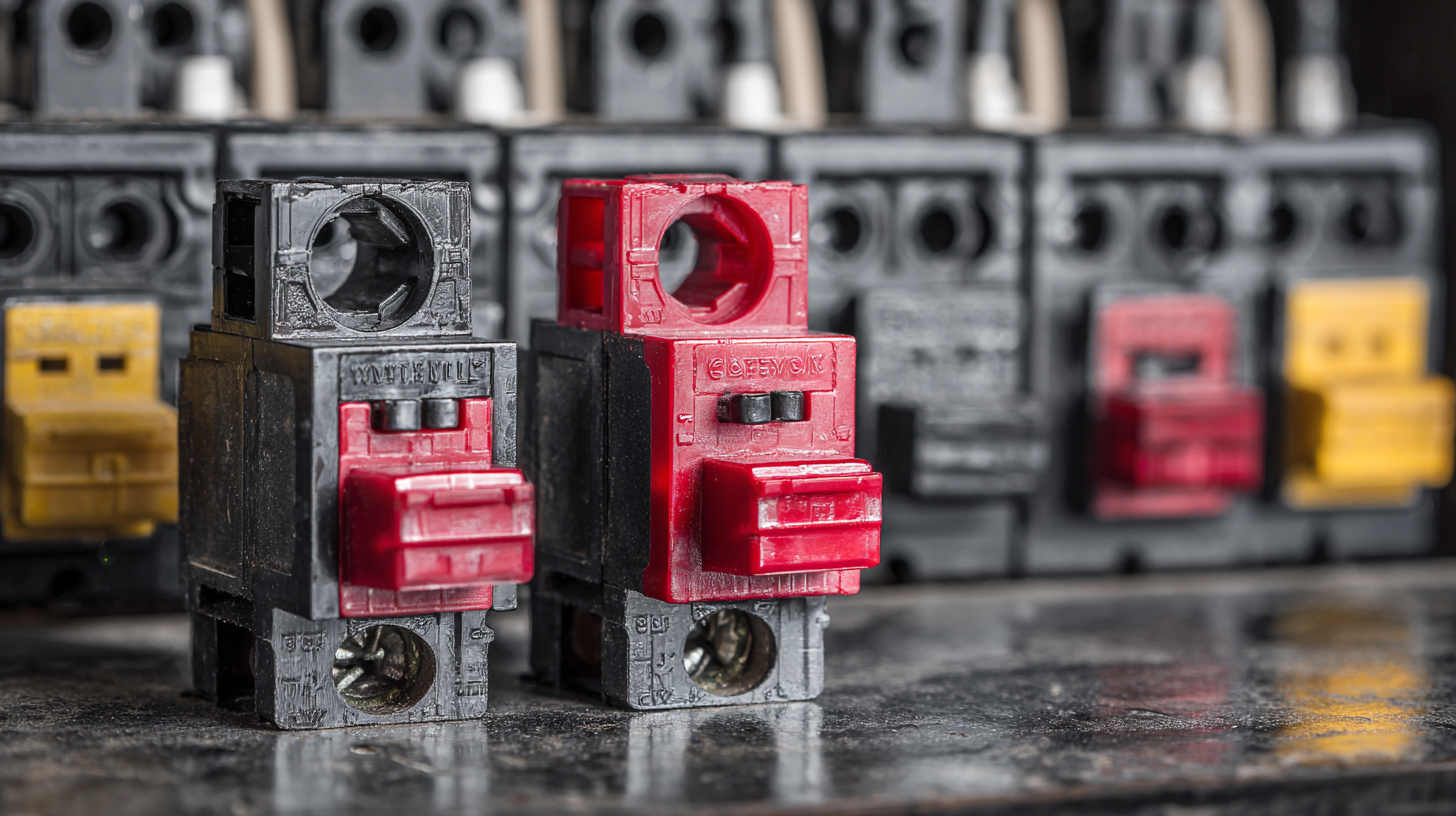
The Connection Between Electric Main Breakers and Energy Efficiency
Electric main breakers are critical components of a home's electrical system, serving not only to protect against overloads and short circuits but also playing a significant role in energy efficiency. A well-functioning main breaker ensures that energy consumption is optimized, as it can regulate the flow of electricity to various circuits in the home. According to the U.S. Department of Energy, households that utilize efficient circuit breakers can see reduced energy usage by up to 15%, leading to substantial savings on electricity bills.
Moreover, the connection between electric main breakers and energy efficiency extends beyond mere protection. Upgrading to modern smart breakers can provide homeowners with real-time monitoring of their energy consumption. A report by the Institute of Electrical and Electronics Engineers (IEEE) highlights that homes equipped with smart breakers not only improve safety but can reduce overall energy waste by as much as 20%. This not only enhances home safety by avoiding overloading but also contributes positively to environmental sustainability by lowering the overall carbon footprint associated with excess energy consumption.
Understanding the Role of Electric Main Breakers in Home Safety and Energy Efficiency
| Dimension | Description | Impact on Energy Efficiency | Safety Benefits |
|---|---|---|---|
| Voltage Rating | The maximum voltage the breaker can handle. | Higher voltage ratings can improve efficiency in heavy applications. | Helps to prevent electrical fires due to overload. |
| Amperage | The maximum current the breaker allows. | Proper amperage sizing ensures optimal energy usage. | Inadequate amperage can lead to circuit failures and hazards. |
| Type of Breaker | Different types include standard, GFCI, and AFCI breakers. | Smart breakers can optimize energy consumption. | GFCI breakers protect against shock risks; AFCI protects against arcs. |
| Age of Breaker | Age can affect performance and reliability of breakers. | Older breakers may not comply with current efficiency standards. | Aging breakers may pose a safety risk due to wear and tear. |
| Installation Quality | Proper installation is crucial for functionality. | Poor installation can lead to energy losses. | Correctly installed breakers reduce risk of malfunctions. |
Steps to Select the Right Electric Main Breaker for Your Home
Selecting the right electric main breaker for your home is crucial for both safety and energy efficiency. When choosing a breaker, it’s important to consider the total electrical load of your household, which includes all appliances, lighting, and electronics. This can help prevent overloads that might lead to outages or potential fire hazards. Additionally, understanding the amperage rating required for your home can ensure that your electric main breaker functions optimally.
Furthermore, consider the type of main breaker that suits your requirements. There are two primary types: standard and GFCI (Ground Fault Circuit Interrupter) breakers. GFCI breakers provide enhanced safety by preventing electrical shocks in wet areas, making them ideal for kitchens and bathrooms. Evaluating features such as surge protection and whether the breaker is compatible with smart home technology can also contribute to an efficient electrical system, ultimately leading to energy savings and peace of mind. Selecting an appropriate electric main breaker not only safeguards your home but can also lead to more effective energy management.
Maintenance Tips for Ensuring Optimal Performance of Electric Main Breakers
Electric main breakers are critical components in ensuring the safety and efficiency of home electrical systems. Regular maintenance is essential for the optimal performance of these breakers, as failure to do so can lead to significant safety hazards, including electrical fires. According to the National Fire Protection Association (NFPA), electrical failures or malfunctions are responsible for approximately 30,000 home fires annually. This statistic underscores the importance of maintaining electric main breakers to mitigate risks and enhance home safety.
To ensure that electric main breakers function effectively, homeowners should implement routine inspections and cleaning procedures. It's recommended to check the breakers at least once a year for signs of wear, corrosion, or damage. The U.S. Consumer Product Safety Commission (CPSC) highlights that outdated or improperly maintained breakers can reduce energy efficiency by up to 20%. Cleaning breaker contacts can also help maintain electrical conductivity, reducing the risk of overheating. Additionally, homeowners should consider scheduling professional inspections every few years to catch any issues that may not be visible during regular checks, thus promoting both safety and energy efficiency.
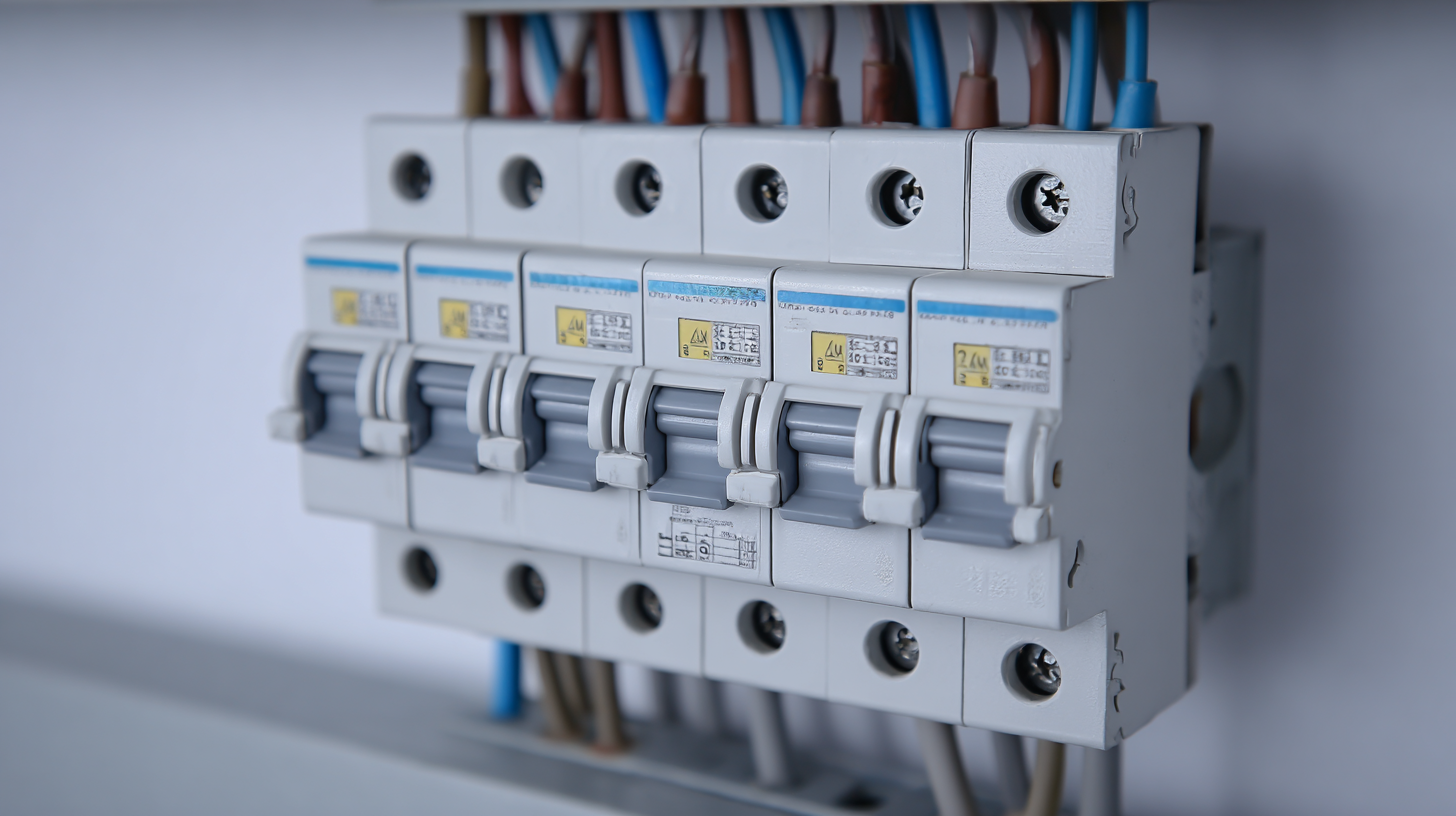
Common Misconceptions About Electric Main Breakers and Their Real Functions
Electric main breakers are often misunderstood components of a home’s electrical system. Many homeowners assume that these breakers simply serve as on/off switches for their electricity. However, their primary function is to protect the home from electrical overloads and short circuits. When a fault occurs, the main breaker automatically interrupts the electrical flow, preventing potential fires and damage to appliances. This safety feature is crucial for maintaining a secure living environment.
Another common misconception is that main breakers can handle any electrical load indefinitely. In reality, each breaker is rated for a specific maximum amperage. Exceeding this limit can cause the breaker to trip frequently, disrupting power and posing safety risks. Additionally, homeowners often overlook the importance of maintaining their electric main breakers. Dust accumulation, corrosion, and aging can impair performance over time, leading to hazardous situations. Understanding these nuances helps homeowners appreciate the critical role of electric main breakers in not only ensuring safety but also enhancing overall energy efficiency.
Related Posts
-
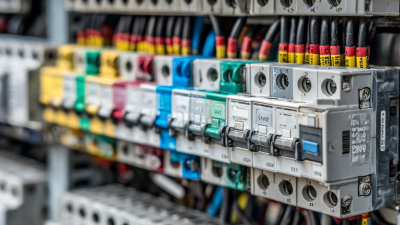
5 Key Reasons Why the Best Electric Main Breaker is Essential for Your Energy Efficiency
-

Top 10 Electronic Circuit Breaker Manufacturers from China at the 137th Canton Fair
-

Unlocking Energy Efficiency: The Advantages of Air Circuit Breakers for Global Industries
-

How to Choose the Right Low Voltage Circuit Breaker for Your Electrical System Efficiency
-
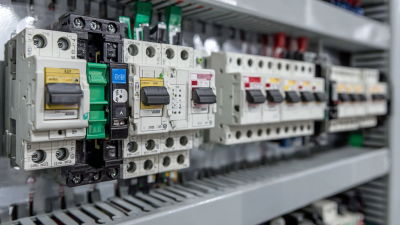
5 Essential Tips for Choosing the Best ACB Circuit Breaker for Your Business
-

Ultimate Guide to Understanding Molded Case Breakers for Your Electrical Needs

 JCB1-125
JCB1-125 JCB2-40M
JCB2-40M JCB3-63DC
JCB3-63DC JCB3-80H
JCB3-80H JCB3-80M
JCB3-80M JCBH-125
JCBH-125 JC125-4P
JC125-4P JCMX
JCMX JCSD
JCSD JCOF
JCOF JCMX1-125
JCMX1-125 JCOF1-125
JCOF1-125 JCSD1-125
JCSD1-125 JCR3HM
JCR3HM JCRD2-125
JCRD2-125 JCRD4-125
JCRD4-125 JCRB2-100
JCRB2-100 JC3RH-2P
JC3RH-2P JC3RH-S
JC3RH-S JC3RH-B
JC3RH-B JC3RH-BS
JC3RH-BS JCR2-63
JCR2-63 JCR1-40
JCR1-40 JCB2LE-80M
JCB2LE-80M JCB2LE-80M
JCB2LE-80M JCB2LE-80M
JCB2LE-80M JCB2LE-40M
JCB2LE-40M JCB1LE-125
JCB1LE-125 JCB3LM-80
JCB3LM-80 JCH2-125
JCH2-125 JCH2-125
JCH2-125 CJX2
CJX2 CJ19
CJ19 JCMCU
JCMCU JCHA
JCHA JCSD-40
JCSD-40 JCSD-60
JCSD-60 JCSP-40
JCSP-40 JCSP-60
JCSP-60 JCSPV
JCSPV WEW1-1000
WEW1-1000 WEW1-1600
WEW1-1600 WEW1-2000
WEW1-2000 WEW1-3200
WEW1-3200 WEW1-4000
WEW1-4000 WEW1-6300
WEW1-6300 DC6-125
DC6-125 AX-400-1250
AX-400-1250 AXAL-400-1250A
AXAL-400-1250A AL-400-1250
AL-400-1250 DC3-160
DC3-160 AXS-400-1250A
AXS-400-1250A SHT-125-160
SHT-125-160 UVT-125-160A
UVT-125-160A P-250A-3P-A
P-250A-3P-A 400-3P/4P terminal cover
400-3P/4P terminal cover 1250-3Pmccb accessories busbar
1250-3Pmccb accessories busbar 250-3P terminal conver
250-3P terminal conver WLM6-TCV-160A-3P
WLM6-TCV-160A-3P WLM6-MIP-250A
WLM6-MIP-250A WLM6-125A-3300 3P/4P
WLM6-125A-3300 3P/4P WLM6-160A-3300 3P/4P
WLM6-160A-3300 3P/4P WLM6-250A-3300 3P/4P
WLM6-250A-3300 3P/4P WLM6-400A-3300 3P/4P
WLM6-400A-3300 3P/4P WLM6-630A-3300 3P/4P
WLM6-630A-3300 3P/4P WLM6-800A-3300 3P/4P
WLM6-800A-3300 3P/4P WLM6-1250A-3300 3P/4P
WLM6-1250A-3300 3P/4P WLM6-1600A-3300 3P/4P
WLM6-1600A-3300 3P/4P WLM6-2000A 3P/4P
WLM6-2000A 3P/4P WLM8-125H-3300
WLM8-125H-3300 WLM8-250H-3300
WLM8-250H-3300 WLM8-400H-3300
WLM8-400H-3300 WLM8-400H-4300
WLM8-400H-4300 WLM8-630H-3300
WLM8-630H-3300 WLM8-630H-4300
WLM8-630H-4300 WLM6RT-125A
WLM6RT-125A WLM6RT-160A
WLM6RT-160A WLM6RT-250A
WLM6RT-250A WLM6RT-400A
WLM6RT-400A WLM6RT-630A
WLM6RT-630A WLM6RT-800A
WLM6RT-800A WLM6RT-1250A
WLM6RT-1250A WLM6E-160A-3300 3P
WLM6E-160A-3300 3P WLM6E-250A-3300
WLM6E-250A-3300 WLM6E-400A-3300 3P/4P
WLM6E-400A-3300 3P/4P WLM6E-630A-3300
WLM6E-630A-3300 WLM6E-800A-3300 3P/4P
WLM6E-800A-3300 3P/4P WLM6E-1250A-3300
WLM6E-1250A-3300 WLM6E-1600-3300 3P/4P
WLM6E-1600-3300 3P/4P WLM6E-2000A-3300 3P/4P
WLM6E-2000A-3300 3P/4P WLM8E-250H-3300
WLM8E-250H-3300 WLM8E-400H-3300
WLM8E-400H-3300 WLM8E-400H-4300
WLM8E-400H-4300 WLM8E-630H-3300
WLM8E-630H-3300 WLM8E-630H-4300
WLM8E-630H-4300 WLM6EY-250-3300 3P/4P
WLM6EY-250-3300 3P/4P WLM6EY-400 3P/4P
WLM6EY-400 3P/4P WLM6EY-630 3P/4P
WLM6EY-630 3P/4P WLM6EY-800A 3P/4P
WLM6EY-800A 3P/4P WLM6EY-1250A 3P/4P
WLM6EY-1250A 3P/4P WLM6ELY-160A
WLM6ELY-160A WLM6ELY-250A
WLM6ELY-250A WLM6ELY-400A
WLM6ELY-400A WLM6ELY-800A
WLM6ELY-800A WLM6ELY-1250A
WLM6ELY-1250A WLM8EY-250H-3300
WLM8EY-250H-3300 WLM8EY-400H-3300
WLM8EY-400H-3300 WLM8EY-630H-3300
WLM8EY-630H-3300 WLM6LY-125A
WLM6LY-125A WLM6L-160A
WLM6L-160A WLM6LY-250A
WLM6LY-250A WLM6LY-400A
WLM6LY-400A WLM6LY-800A
WLM6LY-800A WLM6LY-630A
WLM6LY-630A WLM6LY-1250A
WLM6LY-1250A WLM8LY-125H-3300
WLM8LY-125H-3300 WLM8LY-250H-3300
WLM8LY-250H-3300 WLM8LY-400H-3300
WLM8LY-400H-3300 WLM8LY-630H-3300
WLM8LY-630H-3300 JCB3-63DC
JCB3-63DC JCB1-125DC
JCB1-125DC WLM7DC-250A-2300 2P/3P
WLM7DC-250A-2300 2P/3P WLM7DC-315A-3300 2P/3P
WLM7DC-315A-3300 2P/3P WLM7DC-400A-2300 2P/3P
WLM7DC-400A-2300 2P/3P WLM7DC-630A-3300 3P
WLM7DC-630A-3300 3P WLM7DC-800A-2300 2P/3P
WLM7DC-800A-2300 2P/3P WLM7DC-400A 2300
WLM7DC-400A 2300 WLM7DC-630A-2300 2P
WLM7DC-630A-2300 2P WLM7HU-250-3300 3P
WLM7HU-250-3300 3P WLM7HU-315-3300 3P
WLM7HU-315-3300 3P WLM7HU-400-3300 3P
WLM7HU-400-3300 3P WLM7HU-630-3300 3P
WLM7HU-630-3300 3P WLM7HU-800-3300 3P
WLM7HU-800-3300 3P PV-1500V/250A
PV-1500V/250A WEW3-1600
WEW3-1600 WEW3-2500
WEW3-2500 WEW3-4000
WEW3-4000 WEW3-7500
WEW3-7500



